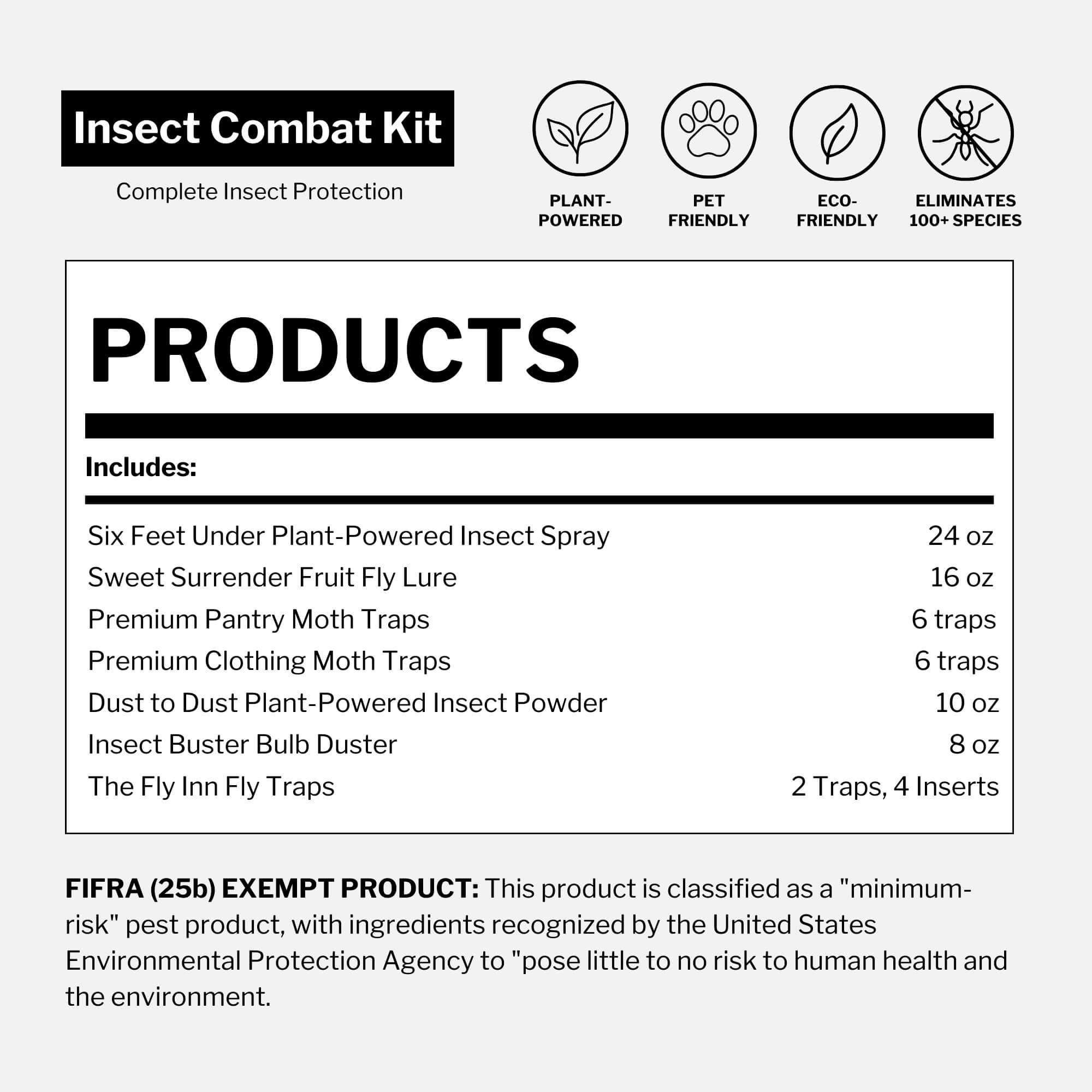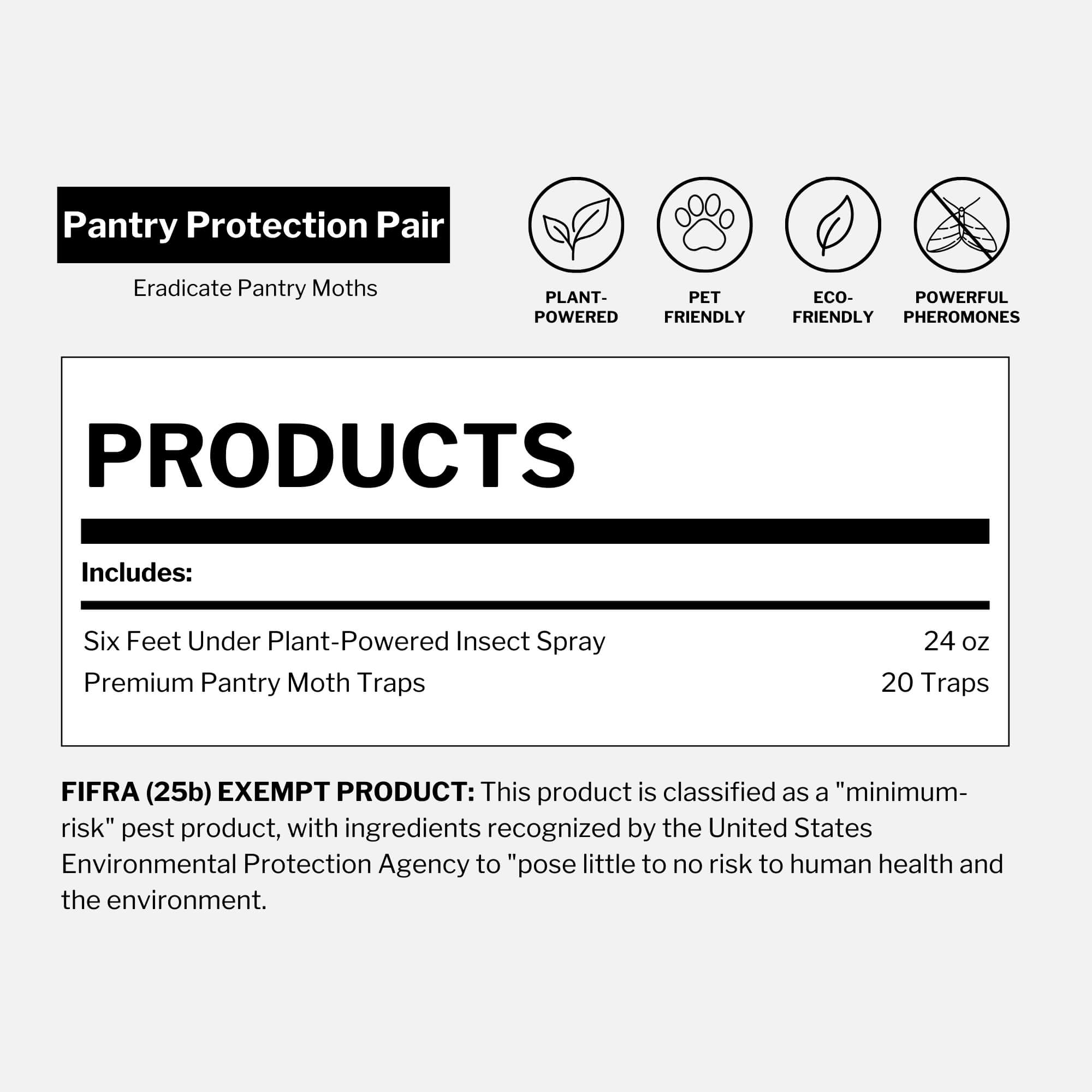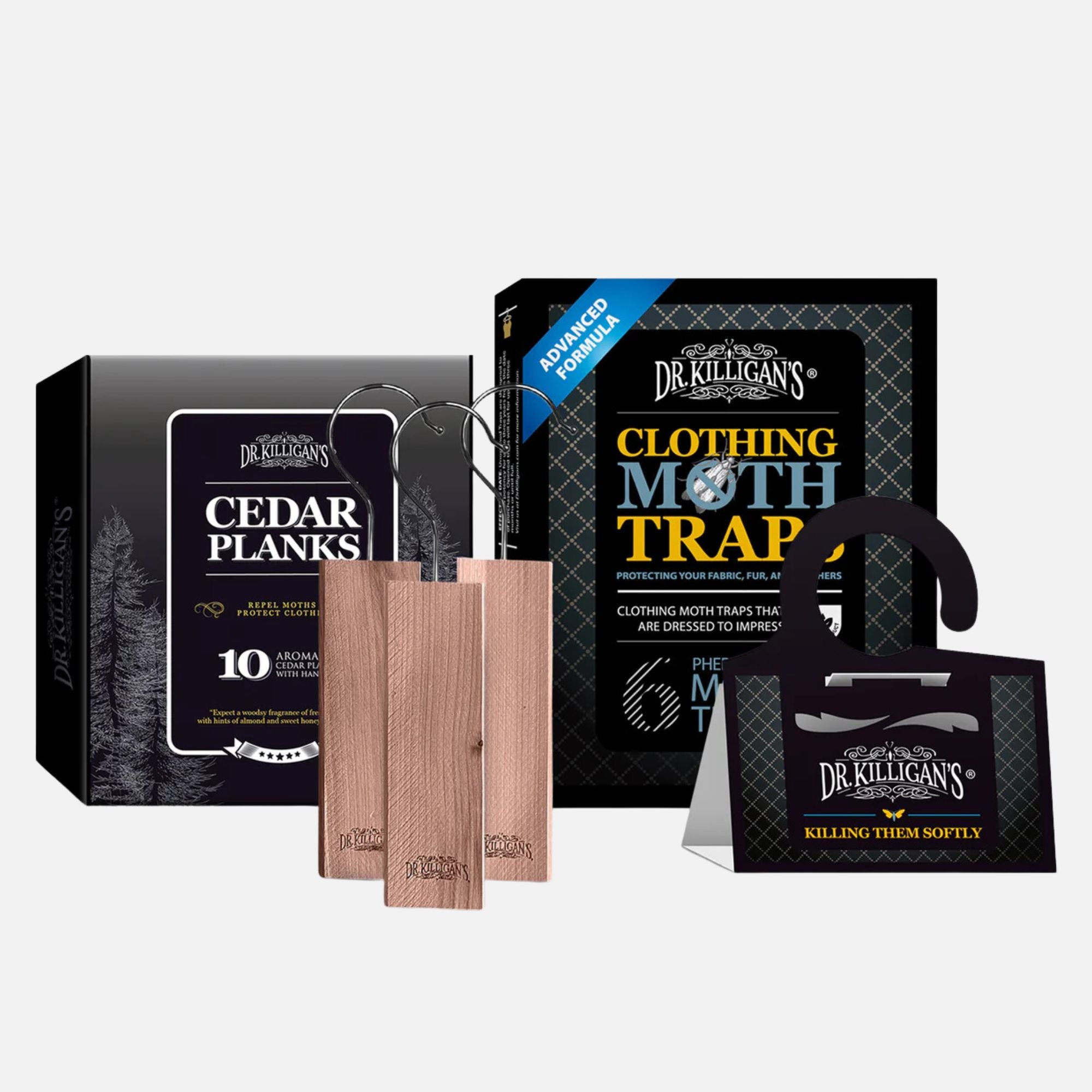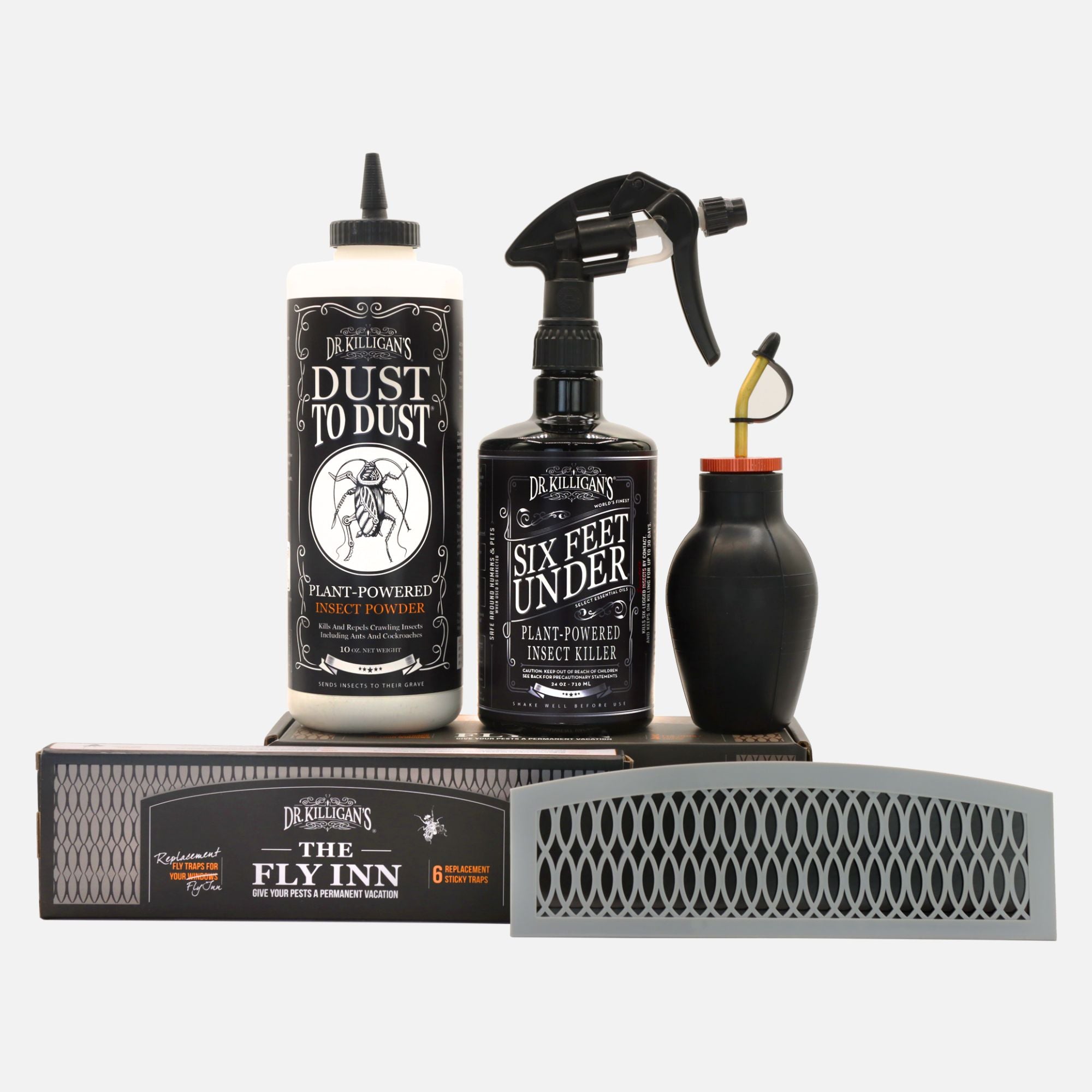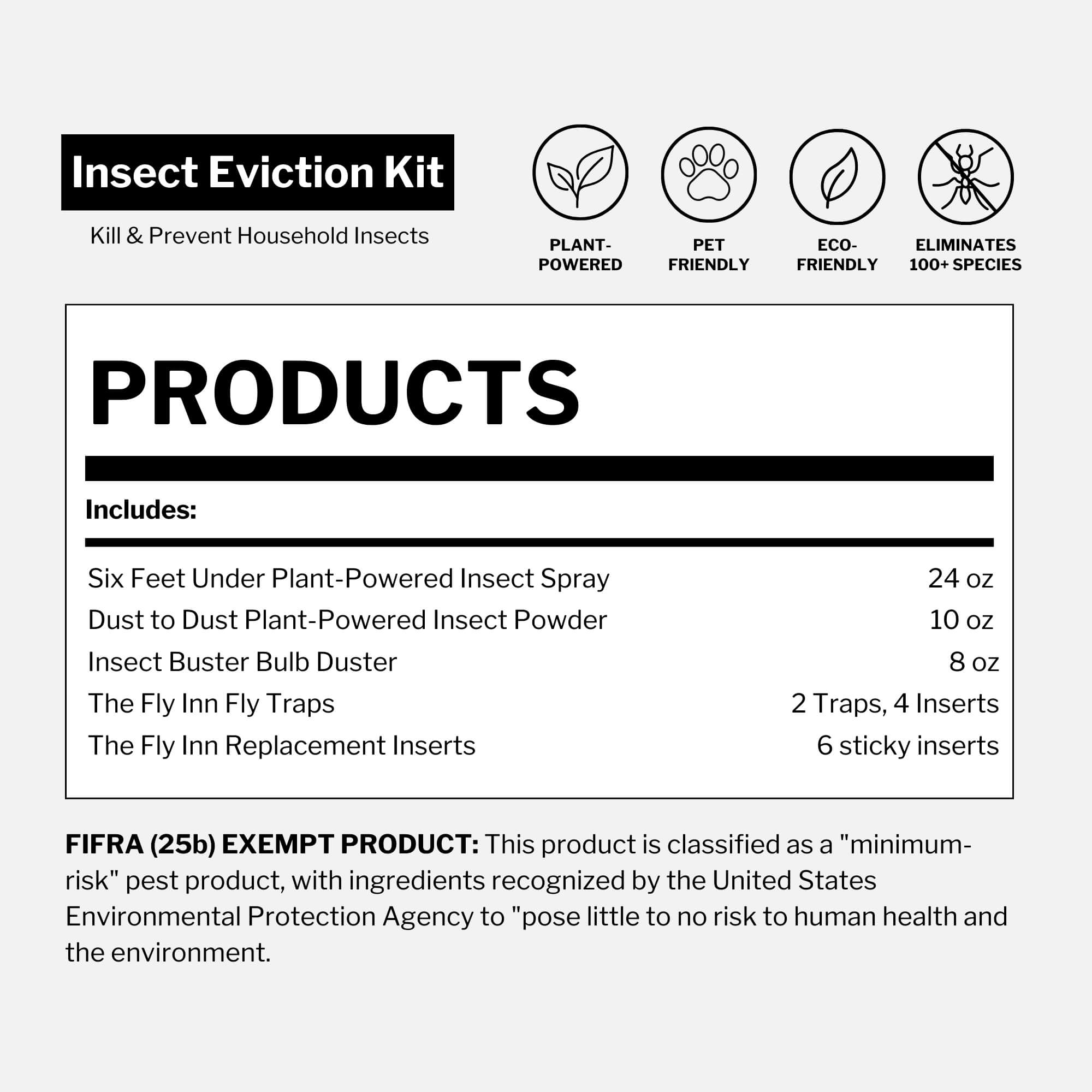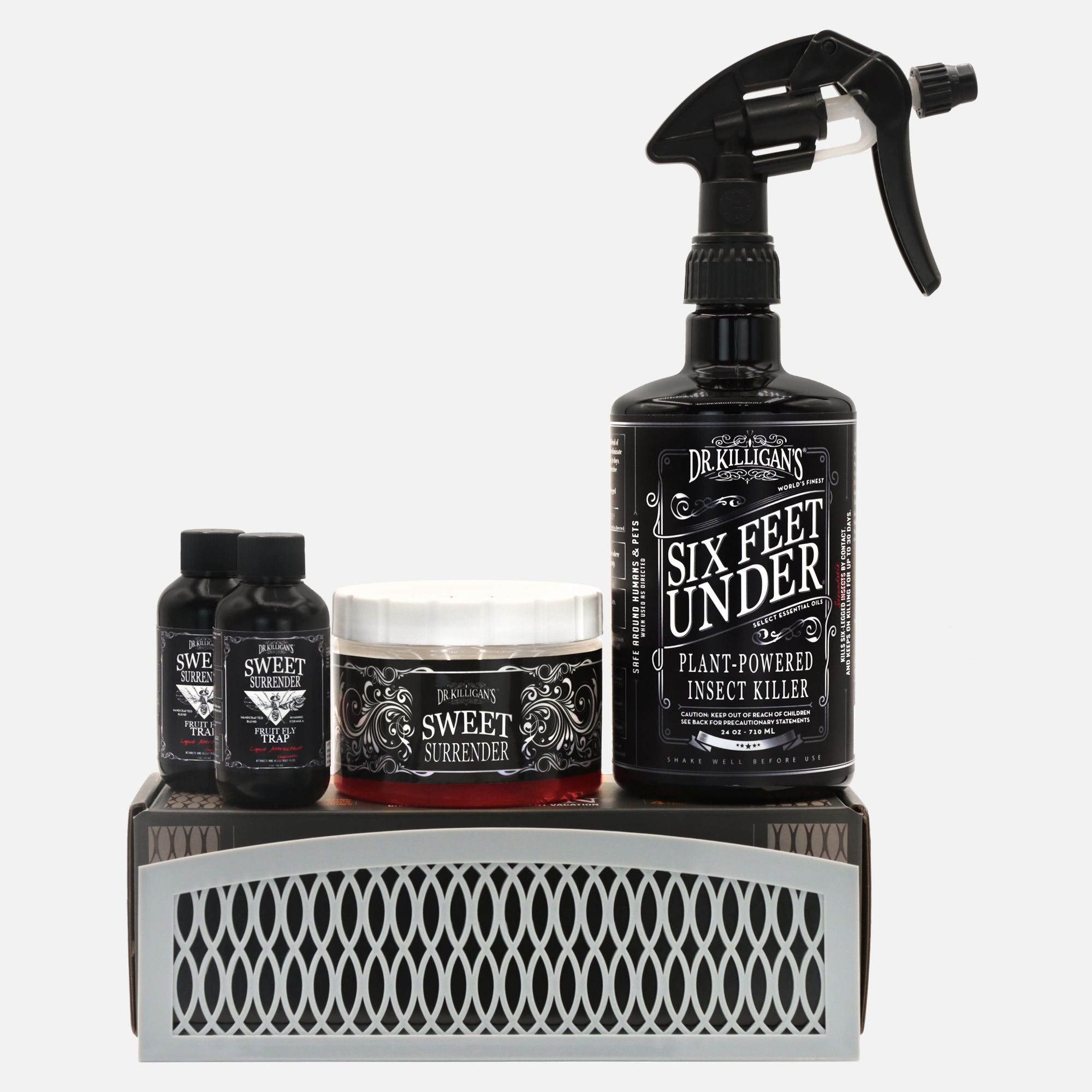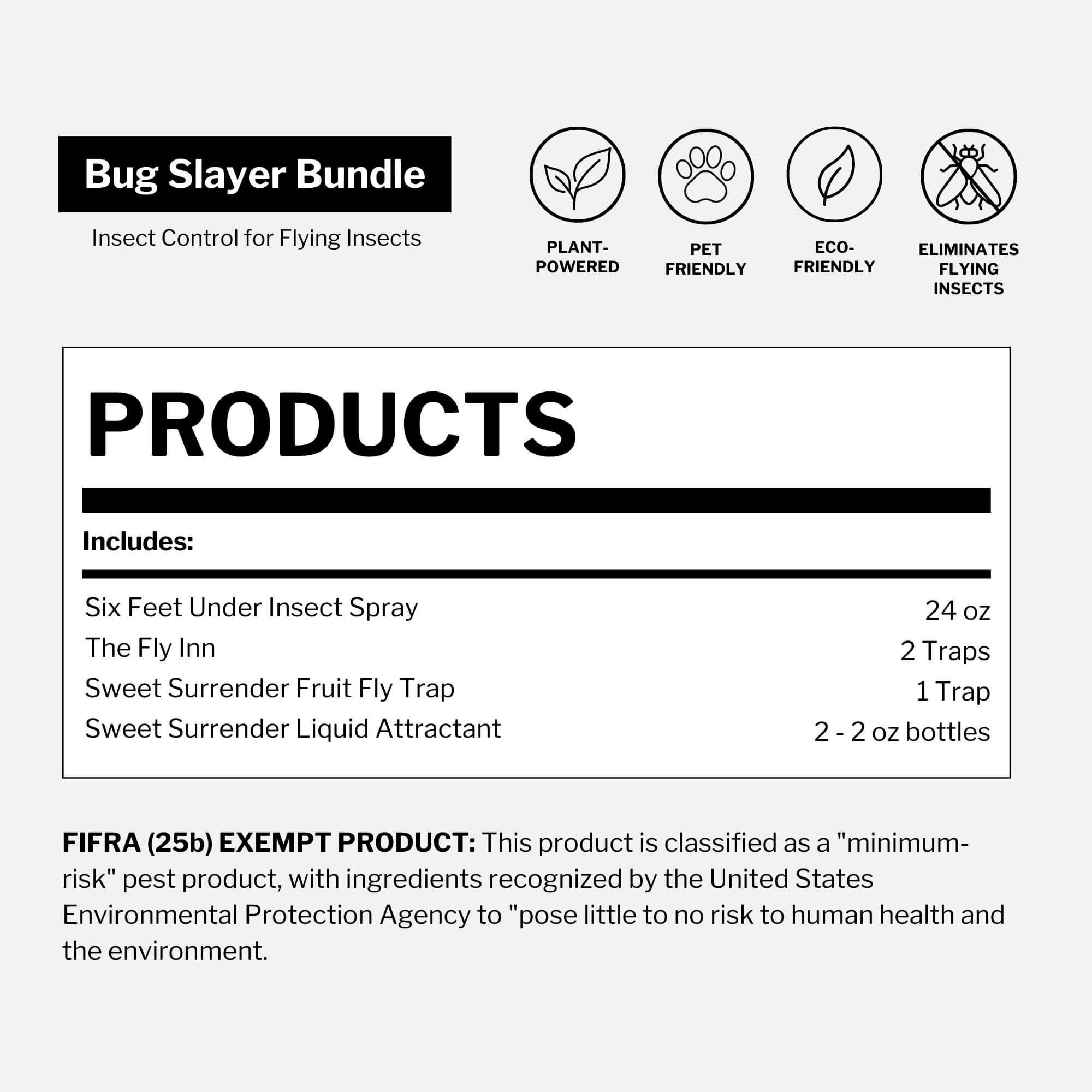Published September 26, 2024 • Updated October 31, 2025
Reviewed by Julie Miller, BA in Language Arts, Editorial Lead, Dr. Killigan’s
TL;DR: Real Christmas trees can carry hidden bugs such as aphids, bark beetles, spiders, mites and even praying mantises. While most are harmless, some can hatch indoors or damage your tree. Follow our expert tips to inspect, treat and protect your home using plant-powered solutions like Six Feet Under Plant-Powered Insect Spray—a fast-acting, essential-oil formula that kills bugs on contact without harsh chemicals.
Can bugs live in Christmas trees?

When the holiday season arrives and we bring real Christmas trees into our homes, there’s a surprise most people never consider—tiny, uninvited guests hiding among the branches.
Bugs can easily hitch a ride on the bark, needles or branches, turning your festive centerpiece into an unexpectedly lively display.
My goal is to help you identify common Christmas tree bugs, prevent infestations and keep your holidays cheerful, safe and bug-free.
Common bugs found in Christmas trees
1. Aphids
Tiny sap-loving insects that resemble small black or green dots, aphids are often mistaken for spiders or ticks. They feed on tree sap, which can cause needles to yellow.
While aphids rarely spread beyond the tree, exceptions do happen. One Washington D.C. homeowner reported hundreds of aphids crawling across her floor after returning from a trip—proof that even small infestations can catch you off guard.
Tip: If you notice yellowing needles or sticky residue, gently shake or vacuum affected branches before bringing the tree indoors.
2. Bark beetles
 Great spruce bark beetle (Dendroctonus micans) on pine bark
Great spruce bark beetle (Dendroctonus micans) on pine barkSmall and cylindrical, bark beetles burrow into the trunk and leave behind tiny holes and sawdust trails. These pests prefer firs and spruces and can spread quickly once established.
They’re attracted to stressed trees and emit pheromones that invite other beetles to join—creating larger infestations.
Tip: Look for pin-sized holes or sawdust near the trunk. If found, lightly spray the area with Six Feet Under to deter any hidden beetles.
3. Spiders
Spiders often arrive as peaceful hitchhikers, preying on other insects that may be hiding in your tree. Common species include wolf spiders, crab spiders and orb-weavers.
In most cases, they’re beneficial—but in rare situations, a large egg sac could hatch indoors (as one Australian family learned when dozens of baby spiders emerged from their tree).
Fun fact: In Germany and Ukraine, spiders are symbols of good luck and some families hang spider ornaments on their trees for prosperity.
Tip: Shake your tree outdoors or use a mechanical tree shaker before bringing it in.
4. Praying mantises
Occasionally, a mantis egg sac (tan and round, about the size of a walnut) may cling to a branch. If left unnoticed, hundreds of tiny mantises can hatch indoors.
This famously happened to an Ohio family who found their home filled with mantis nymphs a few days after decorating their tree. (After this ordeal, the family switched to artificial trees.)
Tip: Inspect branches carefully and remove any visible egg sacs before bringing your tree inside.
5. Mites
Mites are nearly invisible, but you may notice them if your tree starts dropping needles or looking dull. They feed on sap and sometimes other insects.
While generally harmless, heavy mite activity can make your tree look less vibrant.
Tip: A light mist of Six Feet Under can help remove mites safely.
How to choose and prepare a pest-free Christmas tree

1. Source locally
Buy from a local tree farm where pest management practices match your region’s ecosystem. Locally grown trees are less likely to harbor invasive pests.
2. Inspect thoroughly
Check for small holes, sawdust, webs or egg sacs near the trunk and branch joints. These are signs of bark beetles, aphids or spiders.
3. Shake it off
Most farms offer mechanical shaking services. This removes loose needles and the majority of insects before you bring the tree home.
4. Spritz with Six Feet Under
Before setting up your tree, lightly spray it with Six Feet Under, a natural contact killer made with essential oils that’s safe for use around children and pets. It helps prevent hitchhiking bugs from spreading indoors.
5. Quarantine before decorating
Leave your tree in a garage or covered outdoor area for 24–48 hours. This gives any remaining bugs time to vacate before the tree takes center stage in your home.
How to handle specific Christmas tree bugs
Spraying Six Feet Under is a thorough, targeted approach. Because each bug behaves differently, it’s important to understand the best way to treat each one.
| Pest | Risk | Treatment |
|---|---|---|
| Aphids & Mites | Sap-feeders; can discolor needles | Light mist of Six Feet Under |
| Bark Beetles | Bore holes in trunks | Spray holes and bark directly with Six Feet Under; monitor for sawdust |
| Spiders | Beneficial predators | Remove by hand or gentle spray |
| Praying Mantises | Egg sacs may hatch indoors | Remove egg sac before bringing tree in |

After the holidays: what to do
Dispose of your tree properly
When the holidays end, remove your tree promptly and carefully, avoiding the scattering of any pests or eggs that may have survived. Prompt, careful removal is not just about tidiness; it's about preventing any lingering bugs from making your home their permanent residence.
Check if your city offers a recycling or mulching program—these effectively disrupt any bug life cycle and turn your tree into mulch or wood chips.

Clean your space
Vacuum thoroughly around where your tree stood, especially near corners and baseboards. Wash your tree skirt in hot water and wipe surfaces with Six Feet Under for extra peace of mind.
A pest-free and joyful Christmas season
The magic of a real Christmas tree doesn’t need to come with bugs. With a few preventive steps—and safe, plant-powered products—you can enjoy a festive, fragrant centerpiece without worry.
Six Feet Under Plant-Powered Insect Spray keeps your holidays merry, bright and bug-free.
Celebrate safely. Celebrate naturally. Celebrate with Dr. Killigan’s.
References and further reading
For those interested in delving deeper into the world of Christmas tree pests and non-toxic pest control, I recommend the following resources:
- National Christmas Tree Association: Offers extensive information on different types of Christmas trees and their care.
- Environmental Protection Agency (EPA): Provides guidelines on non-toxic pest control methods.
- University of California Integrated Pest Management Program: A great resource for understanding tree pests and their management.
- Dr. Killigan's Blog: Regular updates on safer pest control methods and products.





